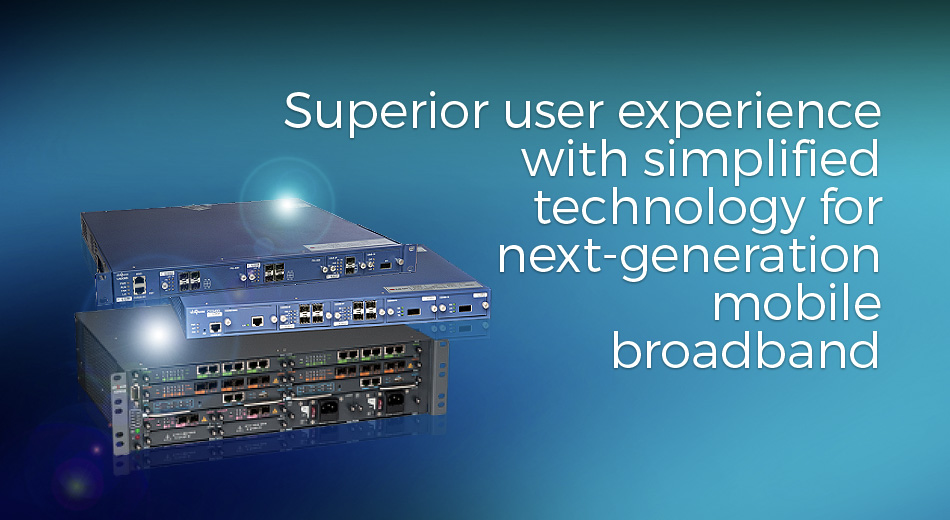LTE BACKHAUL
OUR COMPANY HAS A DREAM AND VISION OF ALL IP CONVERGENCE
 LTE is the next step in the technical evolution of 2G/3G networks. It offers superior user experience with simplified technology for the next-generation mobile broadband. The mobile broadband market is rapidly increasing with the growing popularity of smart phones, tablets, high performance application media contents and cloud services.
LTE is the next step in the technical evolution of 2G/3G networks. It offers superior user experience with simplified technology for the next-generation mobile broadband. The mobile broadband market is rapidly increasing with the growing popularity of smart phones, tablets, high performance application media contents and cloud services.
Skyrocketing traffic volumes and impending 4G/LTE initiatives are creating challenges in network engineering and infrastructure expenses which are driving service providers to evolve their network architectures. Mobile service providers are developing their infrastructures to accommodate new high-bandwidth services and support the increasing traffic demands.
Mobile operators and backhaul transport providers are adopting IP/Ethernet backhaul as the default technology choice to cost effectively scale instead of relying on TDM-based transport networks for LTE backhaul. Due to the fact that 2G and 3G networks have a wider area coverage than LTE, operators plan to deploy microcells, picocells, and femtocells (small cells) in buildings and homes to cover the gaps. The backhaul for these small cells are mostly over the wireline networks rather than the existing macrocell backhaul.
The biggest challenge for mobile network operators is to arrange for small cell traffic to be sent back to the mobile core and mobile packet core. The operators work with building and wireline facilities, then setup the logical pathways back to the LTE core network.
Mobile Backhaul Switches
The ubiQuoss mobile backhaul solutions are suited to meet the operator’s business objectives and subscriber expectations. The ubiQuoss mobile backhaul solutions, with its layer 2 architecture, provide significant financial and operational advantages over a more complex layer 3 architecture. While offering high scalability, availability and serviceability, layer 2 transport architecture enables service providers to deliver highly available services that are better-suited for delay-sensitive mobile applications such as interactive VoIP and video. Additionally, ubiQuoss offers a wide range of backhaul solutions including Picocell aggregation and LTE backhaul switches.
Backhaul Switch is a Carrier Ethernet switching platform that delivers high efficiency IP based packet traffic, which is typically placed at eNB sites as a DU (Digital Unit) device. It can provide Pseudo Wire Emulation service for TDM traffic, offering legacy data services over IP based network for business service as well as 2G or 3G mobile backhaul infrastructure.
The flagship mobile backhaul Switch
Overview
The ubiQuoss CE7010 is a flag ship mobile backhaul network device which has been developed for LTE mobile data applications. This product is typically placed in between e-NodeB and Metro network access portion to provide packet data transmission along with supportive features. It delivers high-capacity traffic performance via 24x 1GE ports or 4 x10GE ports to successfully handle data traffic from the LTE cell site without any loss. The CE7010 provides reliable service with its switching over function for data path protection, and has the ERPS function to configure the access network as a ring structure.
The CE7010 is imbedded with a high performance Layer 2 switch so that it can support versatile L2 protocols. In addition, it has multicast features, improved QoS and strong security along with high speed Layer 2 switching. The device has the benefit of a modular design, where all the major parts are implemented as a module. The modules for the device include 1G module card, 10G module card, power supply module and fan module, where the power supply and fan modules are hot swappable to improve operational efficiency.
Features of CE7010
● Different interface media supported:
- 10/100/1000Base-T upto 24 ports, or
- 10GBase-R(SFP+) upto 4 ports
● Max. 4 Interface modules, hot-Swappable
- LIU-1G6F: 1GE 6port SFP module(1000Base-X)
- LIU-1G6T: 1GE 6port Tx module(1000Base-T)
- LIU-10G2SF: 10GE 2port module(SFP+ Type)
● Control unit (i.e. SCU) redundancy
● 128Gbps Switch Fabric, 95.2Mpps Throughput
● 1GB Main Memory, 512MB Flash Memory
● Up to 32K MAC Address Support for Switching
● Up to 4K VLANs Support
● Y.1731 Fault Management, Performance Management
● IEEE 802.1ag Discovery, Connectivity Check, Loopback, Link Trace
● Ring protection(G.8032)
● OS upgrade without system shutdown


 Oversea Sales +82-70-4865-0565
Oversea Sales +82-70-4865-0565